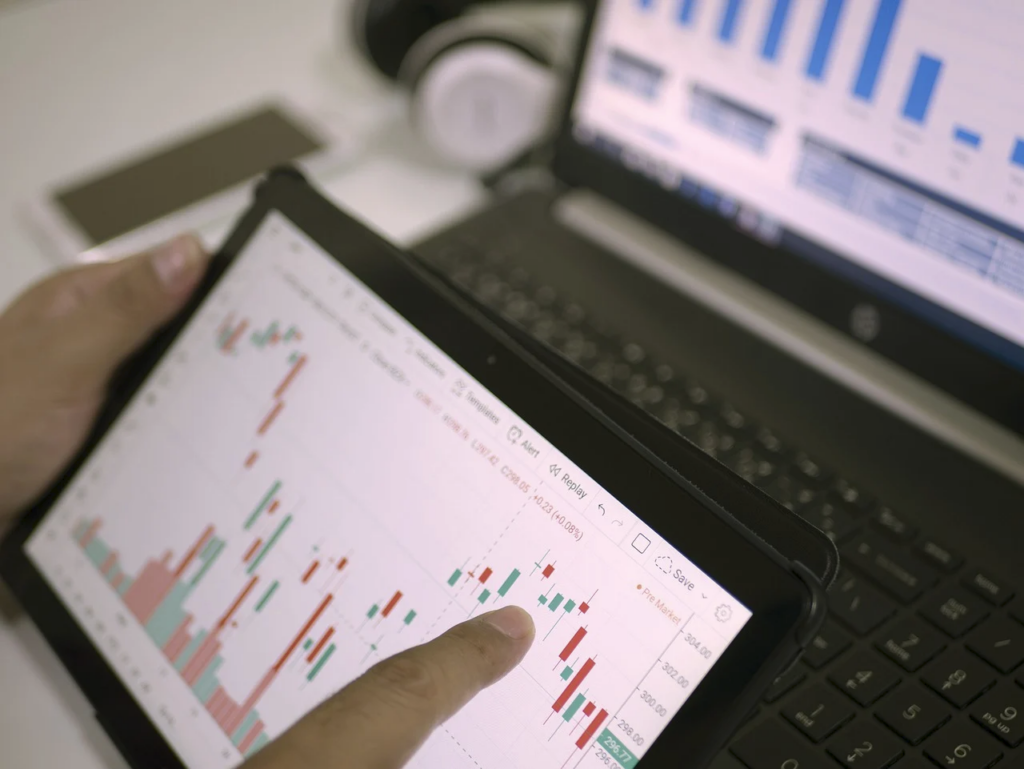How does arbitrage work?
Arbitrage can and should be a risk-free trading strategy. Here we explain the basics of arbitrage, and how, in some cases, it is possible for an individual to profit from this type of trading. Anyone who has played the odds is likely to know what an arbitrage is, even if they may not be familiar with the word. If you have bet money on the outcome of a football match, you have probably noticed that some betting companies have different types of odds. In most cases, they don’t differ that much, but there are other times when it is actually possible to bet on the same team as both winners and losers with different betting companies and then be guaranteed a win regardless of the outcome. It’s rare, but there are times when betting companies have different views on the outcome of a match and it’s worth taking advantage of the opportunity. The same applies to financial markets, but in a slightly different way. In this article, we explain how you can take advantage of this and make an excess return without risk.
What does Arbitrage mean in trading?
Arbitrage is the buying and selling of an asset to take advantage of the difference in the asset’s price between markets. It is a trade that profits from exploiting the price differences of identical or similar financial instruments in different markets or in different forms. Arbitrage exists as a result of market inefficiencies and would therefore not exist if all markets were perfectly efficient. Examples of arbitrage are the trades made by some companies when they buy gold at the spot price in London and sell it forward in New York. Cocoa and coffee are also commodities where arbitrage trading occurs, although with today’s computers and robots it is less common. In the case of these two commodities, there is significant trading in both London and New York, so there are a number of financial firms that have chosen to work with these commodities and take advantage of any mispricing. In 1981, the US investment bank Goldman Sachs acquires a client, J. Aron & Company, in a strategic move to expand the firm’s international presence in the commodities and foreign exchange markets. J. Aron & Company was a small family-owned trading company founded in 1898 by Jacob Aron. From its roots as a New Orleans-based coffee trading company, J. Aron expanded into other agricultural commodities and, in the 1960s, precious metals. One of the specialties of this company was precisely trading coffee and cocoapreferably in the form of arbitrage.
Arbitrage: something for all markets
Arbitrage occurs in all markets because it involves mispricing. Market arbitrage refers to the simultaneous buying and selling of the same security or financial asset in different markets to take advantage of a price difference between the two separate markets. By definition, arbitrage is the exploitation of price differences of the same asset in different locations to make a riskless profit. This is only possible because, contrary to popular belief, markets are not perfectly efficient. In a market arbitrage trade, an arbitrageur would sell the security that is priced higher than the prices in one market while buying the same security in the market where it is priced lower. The profit is the split between the asset’s price in the two markets. Market arbitrage can only be a profitable trading strategy if an asset, traded globally, is priced differently in different markets. In theory, prices for the same asset should be uniform across all market exchanges, but the reality is that this is not always the case. This lack of uniformity gives rise to market arbitrage opportunities. For example, if Company ABC’s stock is trading at $25 per share on the New York Stock Exchange (NYSE) and at $25.15 per share on the London Stock Exchange (LSE), an arbitrageur would buy the stock for $25 on the NYSE and sell it for $25.15 on the LSE, thereby profiting from the difference in the spread ($0.15 per share) for the stock between the two exchanges. Market arbitrage is, in theory, considered a risk-free activity because traders simply buy and sell equal amounts of the same asset at the same time. Again, the reality is that, although the concept of riskless profit is normally valid, the arbitrageur takes on the risk of price volatility in offsetting markets. The price of a security in the offsetting market may rise unexpectedly and result in a loss for an arbitrageur.
Aribitrage and hedging
Hedging and arbitrage both play important roles in finance, economics and investment. Basically, hedging involves using more than one simultaneous bet in opposite directions in an attempt to limit the risk of serious investment loss. Meanwhile, arbitrage is the practice of trading a price difference between more than one market for the same commodity in an attempt to profit from the imbalance. Each transaction involves two competing types of trades: betting short versus betting long (hedging) and buying versus selling (arbitrage). Both are used by traders operating in volatile, dynamic market environments. However, apart from these two similarities, they are very different techniques used for very different purposes. Arbitrage is where a trader will simultaneously buy and sell an asset in the hope of making money from the differences in the price levels of the asset being bought and the asset being sold. Hedging, on the other hand, is a tactic used by the trader to minimize any risk and therefore loss of income resulting from changes in the movement of price levels. Arbitrage is thus a strategy to make money on mispricing whereas hedging is instead a strategy whereby the investor protects himself against sharp price movements in return for giving up his opportunity to benefit from the price rise if he had originally bet on the asset rising in value.
What is the difference between arbitrage and speculation?
Arbitrage is a financial strategy that involves buying a financial asset in one market and selling the same financial asset for a slightly higher price in another. Speculation is based on assumptions and beliefs. Arbitrage involves a limited amount of risk, while the risk of loss and profit is greater with speculation. Anyone can engage in speculation, but arbitrage is mainly used by large institutional investors and hedge funds.
Arbitration
Arbitrage involves the simultaneous buying and selling of an asset to take advantage of small price differences. Arbitrage is possible because of market inefficiencies. Arbitrageurs – those who use arbitrage as a strategy – often buy shares in one market such as a financial market in the US like the New York Stock Exchange (NYSE) while selling the same shares in another market like the London Stock Exchange (LSE). The share would be traded in US dollars in the US, while in London the share would be traded in pounds. This usually happens very quickly, and once taken, the opportunity is gone. As each market for the same stock moves, market inefficiencies, uneven pricing and even USD/GBP exchange rates can temporarily affect prices. Arbitrage is not limited to identical instruments; instead, arbitrageurs can also benefit from predictable relationships between similar financial instruments, such as gold futures and the underlying price of physical gold. However, this is a so-called “spurious arbitrage” and we will look at this in more detail later in this text. Because arbitrage involves the simultaneous buying and selling of an asset, it is essentially a type of hedging and involves limited risk when executed correctly. Keep in mind that limited does not necessarily mean less. While there is a chance of losing from small fluctuations in price, other risks can be much stronger, such as the devaluation of a currency. Since arbitrage is not exactly risk-free, traders need to tailor their situation so the odds of greater profitability increase. Arbitrageurs usually enter large positions because they try to take advantage of very small price differences. Because of these large positions, ordinary investors do not usually participate in arbitrage. Instead, this strategy is mainly used by hedge funds and large institutional investors.
Speculation
Speculation is a short-term strategy of buying and selling. It involves a significant risk of loss or profit. The reward is the main driver, so if there was no expectation of profit there would be no use for speculation. This strategy is generally driven by assumptions or suggestions on the part of the trader, who seeks to profit from rising and falling prices. Speculation is a very important part of the market. Without it, there would be no liquidity. Participants would be limited to just those producers and companies. This would increase the bid-ask spread, making it harder to find buyers and sellers in the market. Without speculation, there would be no liquidity in the markets and market participants would be limited. Unlike arbitrage, anyone can engage in speculation. You don’t need to take large positions in a trade to speculate, so anyone can speculate in their trades, from individual investors to large, institutional ones. There is usually a fine line between investing and speculating. For example, someone may buy a home as his residence. In this case, he can be considered as investing his money. However, if that person buys a property with the express purpose of selling it quickly at a profit, he is engaging in speculation. Financial speculation is not limited to the types of securities involved. It can involve trading in instruments such as bonds, commodities, currencies and derivatives. It can even be used in the real estate market, as described in the example above. For example, a trader may open a long (buy) position in a stock index contract with the expectation of benefiting from rising prices. If the value of the index rises, the trader can close the trade for profit. Conversely, if the value of the index falls, the trade can be closed for a loss. Speculators may also try to profit from a falling market by shorting (selling short or simply selling) the instrument. If prices fall, the position becomes profitable. However, if prices rise, the trade can be closed at a loss.
Work – risk-free? (in practice)
Arbitrage in its proper form is a type of investment, something quite different from speculating in currency trading.
How is it determined whether there are arbitrage opportunities?
How to find a good opportunity? What to look out for? Generally, arbitrage is risk-free, but due to digitalization, profits from risk-free arbitrage will be low. With digitalization touching every aspect of the world, markets have become highly technical. Manually exploiting deviations is almost impossible today as any price deviation is detected and corrected within seconds, leaving a very small window of time for arbitrage. However, there are a couple of examples both in the Swedish stock market, in the foreign exchange market and elsewhere. We will look at a couple of examples later in this text.
Examples of arbitrage in commodities and forex trading
There are a number of ways to arbitrage, particularly in commodities, but also in the foreign exchange market.
Cash-n-carry
The most common way to arbitrage with commodities is what is known as cash-n-carry. This means that a trader buys a physical commodity, such as gold, and then sells the same commodity forward, i.e. into the future. Usually there are storage, insurance and financing costs associated with this that must be deducted from the profit generated by the price difference. An example of such a transaction would be to buy gold in December on Comex at a price of USD 1 897 per troy ounce and then sell the same amount of gold in February at USD 1 904. It is not a large sum, but the profit is locked in. The same can be done with currency pairs.
Inter-exchange
This is also a technique to start an arbitrage trade in the commodity market. In general, the requirements to deliver a commodity are similar. This means that it is possible to buy a commodity, for example coffee, in London or Tokyo and then sell the same commodity in New York with the same or at least similar maturity dates. Another example could be buying a so-called Cattle Crush, where a farmer buys young cattle and corn, and simultaneously sells live cattle in the future. This is not what most of us do, but it is a practical example of how commodities are used to lock in profits, which is exactly what the farmer in the example above is doing.
Interest rate arbitrage
Another form of arbitrage common in forex trading is interest rate arbitrage, also known as a “carry trade”, whereby a trader sells (borrows) a low-interest currency and uses the proceeds to buy a currency that pays a much higher interest rate. The trader makes money every day on his currency trade because the net interest is added to his balance daily. However, at present, currencies that pay a high interest rate are in short supply. Note that there is a risk with an interest rate arbitrage because the trader takes a risk when closing his position. It is not always certain that what he gets for his currency pair on the day he sells is on a par with what he paid for it. As in the commodities market, cash-n-carry is common in forex trading. This means that the trader buys a currency, or a currency pair, and immediately sells it forward. This makes it possible to lock in a profit. Some common arbitrage strategies with examples Dividend arbitrage is a trading strategy that involves buying a stock and selling options before the ex-dividend date. Properly executed, the trader will earn the dividend, lose money on the stock which goes down by the same amount but is offset by an increase in value of the put option. Dividend arbitrage is likely to be viable in a market environment where volatility is low, which will feed into low implied volatility and a cheap price for the option. Note that true dividend arbitrage opportunities are relatively rare. Markets are competitive and other traders are also looking for opportunities where they can make money with the lowest possible risk.
Cryptocurrency arbitrage
If you have traded cryptocurrencies, you know that there are a lot of different exchanges and marketplaces that all offer trading in the most traded cryptocurrencies. Sometimes at completely different prices. Cryptocurrency arbitrage means that the trader tries to take advantage of the price differences between two different cryptocurrency markets. For example, if a cryptocurrency is trading at a cheaper price on the first exchange compared to another marketplace, you can buy the cryptocurrency on the first crypto exchange and sell it at a higher price on the second marketplace, locking in the price difference. Larger crypto exchanges with higher trading volumes usually set the price for the rest of the market, but smaller crypto exchanges do not always have time to adjust prices. Thus, there is a time lag in following up on the prices set by larger exchanges, resulting in arbitrage opportunities in cryptocurrency markets. Triangular arbitrage is common, and allows you to take advantage of price differences between three currencies. You can buy Bitcoin in USD, sell it on an exchange in Europe and then convert those euros back into dollars.
Arbitrage with stock indices
Index arbitrage is an investment strategy that aims to profit from the differences between the current price of a stock and the theoretical forward price of the same stock, but in the form of a stock index. When successful, it can provide the trader with a profit by exploiting market inefficiencies, which occur when the current price does not reflect the latest information about the stock. To help identify inefficiencies, investors can use a variety of program trading techniques to monitor a stock index and the price of futures contracts on that index. If a divergence is detected, these programs can execute an order automatically, that is, the program can simultaneously buy or sell the stocks included in this index or simultaneously do the opposite with the futures contract. An investment trading strategy that takes advantage of differences between actual and theoretical futures prices. An example is the simultaneous buying (selling) of stock index futures for example the S&P 500 while selling (buying) the 505 (yes that’s correct) underlying stocks included in that index, locking in a profit. This is often referred to as basket trading or algorithm trading. Often the point at which profitability exists at the block call is expressed as the number of points the future must be above or below the underlying basket for an arbitrage opportunity to exist.
Risk arbitrage
Risk arbitrage is also called merger arbitrage or merger arbitrage, as it involves the purchase of shares during mergers and acquisitions. Risk arbitrage is a popular strategy among hedge funds that buys the target company’s shares and sells the acquirer’s shares. One of the more amusing examples of risk arbitrage we have seen was when a US company bought one of its Swedish subcontractors with its own shares. However, the buyer had chosen to give the smaller shareholders an alternative. They could tender up to 200 shares and receive SEK 10.50 for them, while the share price was SEK 7.00. Anyone with more than 200 shares was paid in the buyer’s shares. It can thus pay to read press releases, it is possible to make money in a risk arbitrage even after a takeover has been announced.
Triangular Arbitrage
How good are your math skills? This type of arbitrage requires you to know the math and the numbers. We know that arbitrage, i.e. risk-free profits, will not last forever in the market, precisely because, according to all economic theory, it should not be possible to make risk-free profits. For this reason, we will see buying pressure on the low-priced asset and selling pressure on the higher-priced asset on different exchanges, causing prices to eventually converge. Today’s hardware and software facilitate when large investors continuously search for price deviations for the same assets in different markets, leading to the disappearance of the arbitrage opportunity in seconds by increasing the demand for the low-priced asset and increasing the supply for the higher-priced asset. Nevertheless, arbitrage opportunities arise from time to time and traders can make money using certain arbitrage strategies, such as the triangular Forex arbitrage strategy. The forex market is a market without a centralized exchange. This means that currencies are traded at the same prices at different brokers, at least most of the time, but there are exceptions. The triangular currency arbitrage in the spot market works with not one but three currency pairs to exploit exchange rate discrepancies between different currency pairs. In this example, we look at EUR/GBP, GBP/USD and EUR/USD. We start with 100,000 Euros, and use these to buy 88,210 GBP, i.e. the EUR/GBP rate is 0.8810. We then use these pounds to buy 141,716 US dollars at a rate of 1.60658. We then use these dollars to buy euros. We then buy 100 053 euros at an exchange rate of 1.4164 USD, leaving 53 euros in the account in this example. This is not a huge amount, but a few rounds a day are enough to pay for a lot of expenses.
Arbitrage (strategies) in/for FX trading
Forex arbitrage is basically a low-risk method, where traders take advantage of pricing inefficiencies in the market, by buying and selling multiple currency pairs simultaneously. In Forex trading, there are essentially four ways to use the forex arbitrage strategy. We have described one of them under the heading Triangular Arbitrage. The second method allows traders to exploit interest rate differentials between different currencies. For example, an investor based in the US may decide to convert their US dollars into the higher yielding currency and invest in that country. To cover the exchange rate risk, a person can simultaneously buy a futures or options contract. This allows an investor to lock in the exchange rate when the term of these investments expires and the amounts are converted back into US dollars. This is known as a carry trade, which we have also described above. Finally, traders can make use of the statistical Forex arbitrage, which we describe further down in this text. This may sound complicated but it can be easier than it seems. It essentially involves buying the underperforming or undervalued currencies against their overperforming or overvalued counterparts and consequently benefiting from the market corrections. Currency arbitrage is also known as two-point arbitrage, is a trading strategy that takes advantage of the price differences between different currency spreads. The difference in spread is the difference between the bid and ask price of the same currency pair in two different locations or currency markets. Different brokers offer different prices for each currency pair. A forex trader can simultaneously buy and sell currency pairs at different brokers to take advantage of the price discrepancies. Opportunities for this type of arbitrage are very rare and last only for a few seconds because forex markets are highly liquid with huge trading volumes. Exploiting such opportunities requires sophisticated hardware and high-frequency algorithms.
Relative arbitrage
Arbitrage is one of the main groups of strategies used by hedge fund managers to achieve their stated goal of returns in any market, and relative value arbitrage is one of the most common subtypes of this strategy. Relative value arbitrage is more commonly referred to by traders as “pairs trading”. The reason for this is that a relative value arbitrage investor makes simultaneous investments in a pair of securities that are related in some way. Most of the time, these securities will have positive correlations and tend to move in the same direction at the same time, or negative correlations and they tend to move in opposite directions to each other. A common approach to pair trading is to trade two stocks in the same industry that have been on the market for a similar amount of time, such as Pfizer and AstraZeneca in the pharmaceutical industry or Ford and GM in the automobile industry. However, there are many other financial instruments that can be used to similar effect. In Sweden, where unlike many other countries there are different types of shares, for example A shares and B shares, it is not uncommon for private individuals to trade Investor, for example, back and forth. They swap the share they have and buy the other, hoping that the new share will rise in relation to the share they have already sold. Something that many arbitrage traders keep an eye on is the gold-silver ration, which often provides opportunities for good deals. It’s not uncommon to see some traders working with this commodity as if it were a currency pair. They buy one and sell the other. When it took 100 ounces of silver to buy one ounce of gold in the spring of 2020, many traders chose to either sell their gold holdings and buy silver, or the far-sighted traders shorted the gold. The fact that the price of gold rose did not prevent them from making a good deal, as the price of silver rose even more, relative to gold. Hence the name of this type of strategy.
Time Arbitrage
Time arbitrage is not really a pure arbitrage but more of a strategy. It is sometimes given an opportunity when a stock misses its target price and is sold based on a short-term outlook with little change in the company’s long-term prospects. This fall in stock price occurs when a company fails to meet earnings estimates by analysts or its guidance, resulting in a short-term fall where the price of the stock declines.
Time arbitrage in practice
Time arbitrage is a long-term value investor’s best friend. There are many examples of time arbitrage, but the regularity of earnings releases and guidance updates provides an endless amount of opportunities for the stock market to overreact to marginally negative news. Generally speaking, an occasional failure does not mean a company is in trouble, and there is often a good chance of a long-term recovery. However, if the company regularly fails to meet its targets, time arbitrage can be a good way to lose money. The key is to have a good understanding of the company underlying the stock and its fundamentals. This will allow you to sort out the temporary dips that come from the market reaction from the actual devaluations caused by an erosion of the company’s core businesses.
Time arbitrage as an option strategy
Basically, time arbitrage is another version of the old advice, “buy on bad news, sell on good.” Buying a well-analyzed stock that is falling temporarily is an excellent strategy if the long-term trend is still positive. Buying the stock on a short-term dip can be an excellent strategy because even large-cap stocks see significant value swings throughout the year despite their history of steady price appreciation. Buying on a dip is an easy way to get into a company you want to own for the long term. However, there are other ways to make a time arbitrage. One of the more interesting ways is to use options to buy a stock at a dip or or to make a profit when the stock price does not fall. An investor identifies stocks that he intends to own for the long term. Then he sells a put option on the stock. If the stock does not fall, meaning it continues to rise in value or stay above the strike price, the investor gets to keep the premium for the put option but he is not allowed to buy the shares. If the stock falls below the strike price, the investor buys the stock at an even lower effective price, as the option premium received offsets part of the purchase cost. The risk, of course, is that the stock falls far below the strike price, meaning that the investor is forced to pay above market prices to buy the shares of the company he wants to own.
Volatility
Volatility arbitrage is a type of statistical arbitrage strategy implemented in options trading. This strategy generates profits from the difference between the underlying volatility of the options and the forecasted volatility of the underlying assets. The value of options is affected by the volatility of the underlying assets. Higher volatility of the underlying asset leads to a higher value of the option. Therefore, the different implied volatility of the asset and the forecasted volatility of the asset will generate a difference between the expected price and the market price of the option. It is usually implemented in a delta-neutral portfolio with an option and its underlying asset. There are risks in volatility arbitrage with the uncertainty in the implied volatility estimate, the timing of the holding positions and the price change of the underlying asset. There are investors who consistently work with this, usually with something called delta hedges.
Volatility arbitrage and delta-neutral portfolios
Volatility arbitrage, or delta hedges are typically implemented in a delta-neutral portfolio consisting of an option and its underlying asset. Delta is a measure of the sensitivity of the derivative price to the change in its underlying asset price. The delta of a call option ranges from 0 to 1, as an increase in the asset price leads to a higher value for the corresponding call option. The way an option is constructed, the value cannot move more than the underlying asset does. The delta of a put option ranges from -1 to 0, because a higher asset price leads to a lower value of the corresponding put option. An options trader can create a delta-neutral portfolio with a total delta of zero by balancing the positive and negative deltas of the positions. Since an option delta changes over time, the portfolio requires frequent rebalancing to keep the delta neutral. The option trader can thus make profits through these rebalancing transactions by implementing a volatility arbitrage strategy. The value of a delta neutral portfolio remains constant with small price changes in the underlying assets. As long as trading a delta-neutral strategy, volatility arbitrage is a speculation on the volatility instead of the price of the underlying asset.
Volatility arbitrage in practice
Traders implementing a volatility arbitrage strategy look for options with implied volatility significantly higher or lower than the forecasted price volatility of the underlying assets. If a trader believes that the underlying volatility of a stock option is underestimated (the option is too low), the trader may open a long position for the call option and short the underlying stock to hedge. In this way, the trader creates an arbitrage position that keeps the portfolio delta neutral. The trader is said to be “long volatility.” With an unchanged stock price, and if volatility increases, the option should rise to fair value, making the trader a profit. If a trader believes that a stock option is too expensive because of its volatility, the trader can short the volatility by opening a short position for the call option and hedge the position by buying the underlying asset. If the stock price does not change and the trader’s forecast is correct, the price of the option falls to fair value. Thus, the trader profits from his forecast of the volatility. According to the put/call parity (shown in the formula below), holding a long European put option and a long underlying asset is equivalent to holding a long European call option of the same class and a long bond with a notional value of the strike price maturing at the same time as the options’ strike date. Therefore, the options used for the volatility arbitrage strategy can be either call options or put options. When a trader wants long/short volatility, he can buy/short either a call option or a put option, and it gives the same result.
P + S = C + PV[K]
Where P = the price of a European put option S = the price of the underlying asset C = the price of a European call option PV[K] = the present value of the strike price (K), discounted at the risk-free interest rate from the expiration date of the options
Risks
To some extent, volatility arbitrage is not a “true” arbitrage that provides the opportunity to generate risk-free profits. Risks are still present in the volatility arbitrage strategy. In order to benefit from such a strategy, a trader must be correct in several assumptions. These include the overvaluation or undervaluation of the option, the correct timing of holding positions and the price change of the underlying asset. Incorrect estimates can lead to the erosion of time value, requiring costly strategy adjustments. They can counteract the gains. The volatility arbitrage strategy in a portfolio also provides diversification of volatility risk. However, the ‘black swan’ -events can significantly affect returns, especially when the portfolio contains implied volatilities correlated across assets. The hedge fund management firm Long Term Capital Management (LTCM) which was run by a couple of Nobel laureates tried to implement both the volatility arbitrage strategy and some other arbitrage strategies. Since arbitrage provides a low return, LTCM traded with very high leverage. As a result of its high leverage and a ‘black swan’ -event – the Russian government’s domestic bonds – LTCM went bankrupt in 1998.
Latency
Latency arbitrage is mainly associated with high-frequency trading and it refers to the fact that different participants receive market data at different times. These time differences are called latencies. These differences can be as small as a nanosecond but they are crucial in the world of high-speed trading. Latency arbitrage occurs when the high-frequency trading algorithms create profits by making trades just before other traders. Think the book Flash Boys. The term “arbitrage” refers to the practice of buying an asset from one market and then selling it in another market at a slightly higher value. Buying and selling very quickly, taking advantage of an artificial shortage created by the original purchase. It is not a new concept in financial markets, but it came to receive a lot of attention when the financial industry underwent a digital transformation in the last decades. As markets shifted to purely digital transactions, many traders realized they could gain an advantage by making purchases faster than everyone else and then selling them at a quick albeit small profit. Since data speeds are a by-product of distance, they could reduce the latency of their trades by physically locating their servers closer to the market exchange.
Crude oil Arbitrage
Crude oil arbitrage is a very popular trading strategy in the energy sector to take advantage of the price discrepancies between different crude oils, such as Brent and WTI. This strategy involves buying or selling Brent while taking an opposite position in WTI. It is thus a “relative arbitrage” or a pair trade.
Political aribitrage
Political arbitrage is a trading strategy in which traders use their knowledge or estimates of future political activity to forecast and make profits. For example, the most important factor in the values of some foreign government bonds is the risk of default, which is a political decision made by the country’s government. The values of companies in war-sensitive sectors such as oil and arms are affected by political decisions to wage war. Legal trade must be based on publicly available information. However, there is a gray area with lobbyists and market rumors. Like insider trading, there is room for conflicts of interest when policymakers themselves have the opportunity to benefit from private investments whose values are linked to their own public policy actions. A good example is when George Soros on September 16, 1992 is now known as the day when speculators “crushed the British pound”, which is a euphemism created to describe the moment in time when he rallied to force the British government to exempt the pound from the European Exchange Rate Mechanism (ERM). Joining the ERM was part of the UK’s efforts to help unify European economies. Black Wednesday is undoubtedly a consequence of this effort.
Risk-free credit
Risk-free arbitrage is the simultaneous buying and selling of an asset immediately and generating a profit from the price difference. Risk-free arbitrage requires no investment because the asset is sold immediately.
Negative arbitrage opportunities
Negative arbitrage has historically been a manageable nuisance for, for example, U.S. hospitals considering tax-exempt bonds for financing construction projects. In recent years, however, the negative arbitrage budget line has swelled. As a result, negative arbitrage has swallowed up valuable funds for improvements and in some cases made projects impossible. For some hospitals, the cost of negative arbitrage has become a bad monster-movie metaphor. Why has negative arbitrage become so costly, when will its effect disappear and what defense strategies are currently in place?
What is negative arbitrage?
Arbitrage, with respect to tax-exempt bonds, is the difference between the interest rate a borrower pays on its debt and the interest rate the borrower can achieve by investing capital not yet spent. In the mid-2000s, tax-exempt borrowers had the potential to make profits in the form of a positive arbitrage on unspent bond funds. Currently, however, borrowers such as US hospitals have to pay out more to investors than they take in from investments. This extra capitalized interest is negative arbitrage.
Statistical arbitrage: For math professionals
Statistical arbitrage, statistical arbitrage or stat arb, is an arbitrage technique that involves complex statistical models to find trading opportunities among financial instruments with different market prices. These models are typically based on mean-reverting strategies and require significant computational power.
Quantitative trade
Statistical Arbitrage or Stat Arb has a history of being a highly profitable algorithmic trading strategy for many large investment banks and hedge funds. Statistical arbitrage emerged around the 1980s, led by Morgan Stanley and other banks. The strategy witnessed wide application in financial markets. The popularity of the strategy continued for more than two decades and various models were created around it to capture big profits. To define it in simple terms, Statistical Arbitrage comprises a set of quantitatively driven algorithmic trading strategies. These strategies aim to exploit the relative price movements across thousands of financial instruments by analyzing price patterns and price differences between financial instruments. The goal of such strategies is to generate alpha that is, excess profits for the trading firms. A point to note here is that statistical arbitrage is not a high-frequency trading (HFT) strategy. It can be categorized as a medium-frequency strategy where the trading period occurs over a few hours to a few days. To analyze price patterns and price differences, the strategies use statistical and mathematical models. Statistical arbitrage strategies can also be designed using factors such as lag effects, corporate activity, short-term momentum, etc. than using price data alone. This latter approach is called a multifactor statistical arbitrage model. The various concepts used by statistical arbitrage strategies include: Time series analysis AutoRegression and co-integration Volatility modeling Principal component analysis Pattern finding techniques Machine learning techniques Efficient frontier analysis etc.
Types of statistical arbitrage strategies
The different statistical arbitrage strategies include: Market Neutral Arbitrage Cross Asset Arbitrage Cross Market Arbitrage ETF Arbitrage
Convertible arbitrage
A convertible arbitrage is a strategy in which the trader buys a convertible and shorts its underlying stock. Convertible arbitrage is a type of long-short investment strategy often used by hedge funds. A long-short strategy is normally an investment strategy that involves taking long positions in stocks that are expected to increase in value and short positions in stocks that are expected to decrease in value. However, instead of buying and shorting stocks, convertible arbitrage is taking a long position in, or buying, convertible securities. A convertible is considered a bond that the holder can exchange for shares under certain conditions. The investor simultaneously takes a short position in or sells the common stock of the same company. However, convertible bonds are not considered as bonds or shares, but as hybrid securities with characteristics of both. They generally have a lower yield than other bonds, but this is usually balanced by the fact that they can be converted into shares at what is usually a discount to the market value of the shares. Buying the convertible bond actually puts the investor in a better position than the shareholder. The investor can choose to keep the bond as it is, or to convert it into shares if the share price rises. The idea behind convertible arbitrage is that a company’s convertible bonds are sometimes priced inefficiently relative to the company’s stock. Convertible arbitrage tries to take advantage of this pricing error. Convertible arbitrage is not without risks. First, it is more difficult than it sounds. Since one generally has to hold convertible bonds for a certain amount of time before they can be converted into shares, it is important for the convertible arbitrageur to evaluate the market carefully and determine in advance whether market conditions will coincide with the time frame in which conversion is allowed. At the moment we do not find any convertible arbitrage. This is mainly because there are few convertibles traded on the Swedish stock exchange.
Is arbitrage trading illegal?
No, it is certainly not illegal in general. There may be certain situations where it is not in accordance with laws and regulations, for example if it is a person in a senior position in the company concerned, but beyond that there is nothing that prohibits arbitrage trading.
Is arbitrage trading completely risk-free?
No, nothing is completely risk-free, but in its basic form an arbitrage is risk-free. However, we have seen the risks involved in the volatility trades that led to the bankruptcy of hedge fund management firm Long Term Capital Management (LTCM) in 1998.
About the Vikingen
With the Viking’s signals, you have a good chance of finding the winners and selling in time. There are many securities. With Vikingen’s autopilots or tables, you can sort out the most interesting ETFs, stocks, options, warrants, funds, and so on. Vikingen is one of Sweden’s oldest equity research programs. Click here to see what Vikingen offers: Detailed comparison – Stock market program for those who want to get even richer (vikingen.se)













